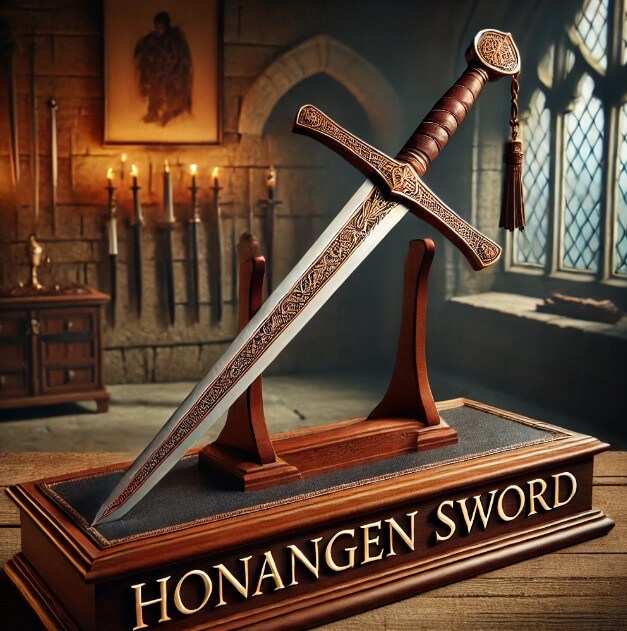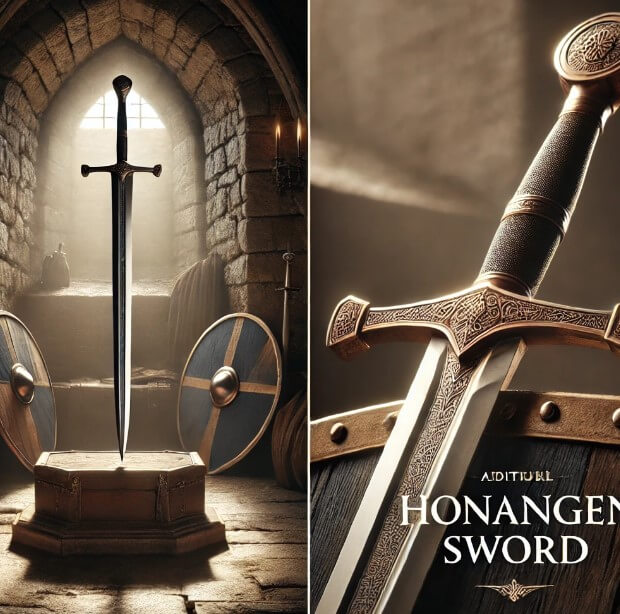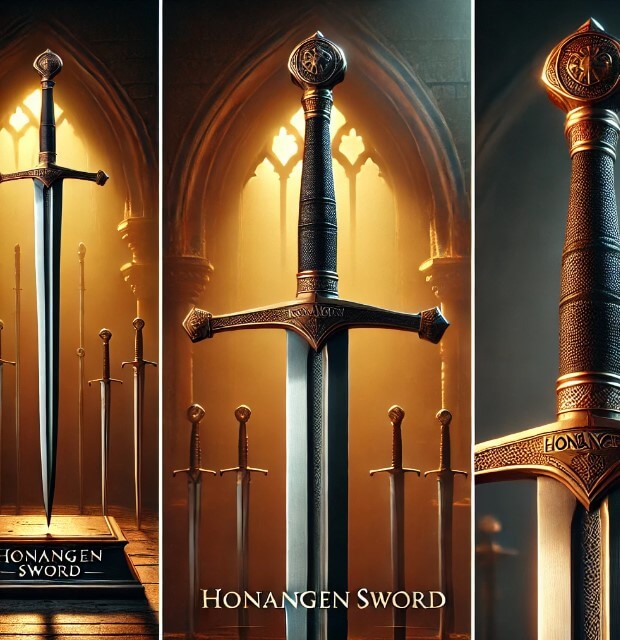The Honangen Sword is a legendary artifact, celebrated for its superior craftsmanship, captivating history, and symbolic significance. This extraordinary blade has become an emblem of medieval martial prowess and a relic that continues to fascinate historians and weapon enthusiasts around the world. This article explores everything about the Honangen Sword, from its origins and design to its cultural significance and influence.
Origins and Historical Context
The Beginnings of the Honangen Sword
The Honangen Sword dates back to the medieval era, a time when sword-making was considered both an art and a necessity of war. Developed in a period of intense conflict and innovation, the sword’s fame grew due to the mastery with which it was forged and its efficiency in battle. Swords like the Honangen were not mere weapons but symbols of honor and authority.
Role in Medieval Society
In the medieval period, swords held immense cultural and practical significance. The Honangen Sword, specifically, was revered as a symbol of status and power. It was often passed down through generations, forming part of noble and royal households’ treasured possessions. As such, it became a link between warriors and their legacies, cementing its place in history.
Design and Craftsmanship

Blade Characteristics
- Blade Shape: The Honangen Sword features a slender yet strong blade, meticulously crafted for both cutting and thrusting. The curvature and length are carefully balanced to ensure maximum effectiveness in combat.
- Pointed Tip: The blade has a tapered, sharp tip designed to pierce armor, while its edges remain finely honed for powerful slashing attacks.
- Steel Composition: Forged from high-carbon steel, the sword has incredible durability and the ability to retain a sharp edge.
Hilt and Guard Design
The sword’s hilt is a work of art in itself:
- Cross-Guard: The cross-guard provides protection for the wielder’s hands and often features intricate designs or engravings.
- Grip: The grip is designed for a firm hold, usually wrapped in leather or a similar material to ensure a non-slip grip during combat.
- Pommel: Often embellished with symbols or the coat of arms of its owner, the pommel serves as both a counterweight for balance and an additional aesthetic feature.
Unique Forging Techniques
The Honangen Sword is known for its advanced forging techniques. Medieval blacksmiths employed methods such as:
- Folding Steel: Repeatedly folding the steel to remove impurities and create a strong yet flexible blade.
- Heat Treatment: Quenching and tempering to achieve a perfect balance between hardness and flexibility.
Evolution Over Time
Adaptations for Warfare
As warfare evolved, so did the design of the Honangen Sword. The early versions were optimized for slashing attacks but later adapted to include thrusting capabilities to penetrate armor. This evolution made the Honangen Sword a versatile and indispensable weapon on the battlefield.
Honangen Sword Specifications
| Attribute | Details |
|---|---|
| Length | Approximately 90-110 cm (35-43 inches) |
| Blade Type | Double-edged, slightly curved blade |
| Material | High-carbon steel |
| Weight | 1.2-1.5 kg (2.6-3.3 lbs) |
| Hilt | Leather-wrapped, with brass or iron |
| Purpose | Combat, ceremonial |
Cultural Significance

A Symbol of Nobility and Honor
The Honangen Sword became synonymous with nobility, honor, and the code of chivalry. Owning such a blade was a matter of pride for knights and warriors. The sword’s symbolism extended beyond the battlefield, becoming a part of medieval ceremonies and rituals.
The Sword in Folklore
Stories and legends about the Honangen Sword abound. Many tales describe it as a weapon with almost magical properties, capable of cutting through the strongest armor and bestowing invincibility upon its wielder. These legends have only added to the mystique of the Honangen Sword, inspiring numerous works of fiction.
Preservation and Collecting
Modern-Day Collectors
Today, the Honangen Sword is a highly sought-after artifact among collectors and museums. Authentic versions of the sword are incredibly rare, and their value can reach astronomical figures in auctions. Collectors look for:
- Provenance: A well-documented history of the sword’s ownership.
- Craftsmanship: Authenticity and craftsmanship are paramount, with emphasis on traditional forging techniques.
Museums and Displays
Several museums across the world house replicas or authentic Honangen Swords as part of their medieval collections. These exhibitions provide insight into the artistry and functionality of this legendary weapon.
The Honangen Sword in Popular Culture
The Honangen Sword has appeared in numerous films, books, and video games. Its storied past and legendary status have made it a popular symbol of heroism and strength. Media portrayals often emphasize the sword’s indestructibility and its significance as a weapon of destiny.
FAQs About the Honangen Sword
What makes the Honangen Sword unique?
The Honangen Sword stands out for its exceptional craftsmanship, balance, and versatility. Its design is a perfect blend of form and function, making it both a highly efficient weapon and a work of art.
Was the Honangen Sword used in any famous battles?
Yes, the Honangen Sword was likely used in several medieval conflicts, where it demonstrated its effectiveness. Though records are sparse, it is often associated with key battles fought by noble warriors.
How is the Honangen Sword different from other medieval swords?
The Honangen Sword is distinguished by its superior balance, pointed tip for thrusting, and the advanced forging techniques used in its creation, such as steel folding and heat treatment.
Can you still find authentic Honangen Swords today?
Authentic Honangen Swords are extremely rare and are typically found in museums or private collections. Replicas are more common and are often used in historical reenactments or as collector’s items.
What materials were used to make the Honangen Sword?
The blade was made from high-carbon steel, known for its strength and ability to retain a sharp edge. The hilt and pommel were crafted from materials such as iron, brass, or even precious metals, depending on the status of the owner.
Why is the Honangen Sword considered a symbol of power?
The Honangen Sword was often owned by nobility and warriors of high rank, symbolizing their status and authority. Its craftsmanship and the legends surrounding it further enhanced its reputation as a symbol of power.
Conlcusion
The Honangen Sword remains a timeless symbol of the skill and artistry of medieval blacksmiths. Its story continues to inspire, reflecting the enduring human fascination with weapons that define history and culture.

